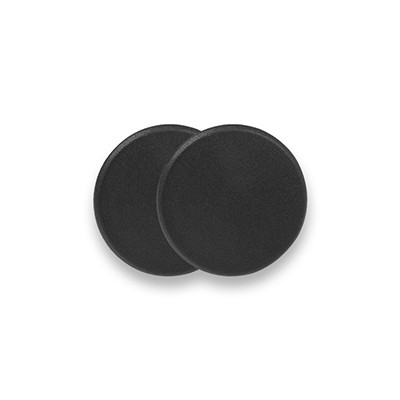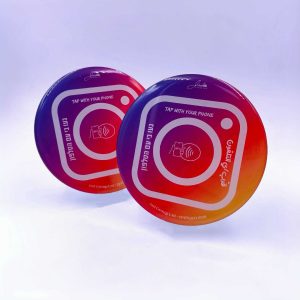NFC Forum is a non-profit trade group that establishes industry standards and promotes the use of NFC technology.
NFC tag is a short-range wireless technology designed for device-to-device communication, such as between smartphones and payment terminals. It employs magnetic field induction for communication purposes.
The technology is utilized in sensitive applications, such as mobile payments and gaining access to protected data. This sensitivity necessitates varying levels of security and privacy, which are defined by the NFC Forum.
What exactly is the NFC Forum?
NFC Forum is a non-profit trade group that establishes industry standards and promotes the use of NFC technology. It was founded in 2004 and has over 140 member companies from a variety of industries, including technology, finance, and retail.
This organization is essential for the efficient operation of NFC technology because it establishes guidelines for device interaction and communication protocols. It also manages the certification process for NFC-enabled devices.
As a result, interoperability and security are assured. Any NFC-enabled device, regardless of brand, can be used to complete a transaction or exchange information.
NFC Forum Tag Types
NFC tags are small chips that can communicate with NFC-enabled devices and store data. These tags are available in a variety of types, each of which is designed for a specific application and offers varying levels of security and memory capacity. The NFC Forum defines their features, which include:
Type 1 NFC Tags
These tags adhere to ISO14443A standards and feature read/write functionality (configurable to read-only). They have a storage capacity of 96 bytes and are frequently used for data exchange and website launching.
If you require additional memory, you can increase it to 2K bytes. This adaptability allows you to utilize them for even more complex tasks. It transmits data at a rate of 106 Kbit/s. This is sufficient for basic applications, but may not be appropriate for larger data transfers.
In addition, the tags lack reliable data collision avoidance, rendering them unreliable in crowded environments. Additionally, interference may occur if multiple devices attempt to access them simultaneously.
Type 1 tags are suitable for simple, low-security use cases due to their limitations. They are inexpensive and frequently employed in marketing campaigns and product packaging. The NFC Type 1 tags Innovision and Topaz 512 are examples (BCM20203).
Type 2 NFC Tags
Type 2 tags are also based on ISO14443A, but they have a larger storage capacity and enhanced data collision prevention. They can store up to 144 bytes of data, making them suitable for complex tasks involving larger quantities of data. For basic tasks, they also provide a 48-byte storage option.
These tags are capable of both reading and writing but can be configured to be read-only. Their 106 Kbit/s data transmission rate makes them suitable for simple tasks but not for high-speed data transfers.
Type 2 tags provide marginally greater security and dependability in crowded environments than Type 1 tags. They employ a two-byte lock control TLV, which enables access control and prevents unauthorized modifications to the stored data.
Additionally, they are inexpensive and frequently used in marketing campaigns or product packaging. The NXP MIFARE Ultralight is an example of a Type 2 NFC tag. This is a standard feature of credit cards, access control cards, and event tickets.
Type 3 NFC Tags
Type 3 tags are based on Sony’s FeliCa specifications and have a greater storage capacity than Type 1 and Type 2 tags. They have a memory capacity of 1/4/9k bytes, allowing them to store large amounts of data and execute complex tasks.
It is frequently used in industrial or high-security environments due to its high complexity and expense. Type 3 tags also have read/write capabilities (with the option to switch to read-only) and are prevalent in Asian markets.
Type 3 tags are more secure than Type 1 and Type 2 tags due to their high-grade encryption system, which prevents unauthorized data access and modification. As a result, it can be used to store sensitive data such as payment information or medical records.
Its transmission speed of 212/424 Kbit/s enables quick data transfers. Sony FeliCa Lite-S is an example of an NFC Type 3 tag. It is typically employed in transportation systems and ticketing.
Type 4 NFC Tags
Type 4 tags are ISO14443A and B compliant and have a greater storage capacity than Types 1, 2, and 3. With a memory capacity of up to 32k bytes, they are ideally suited for high-capacity tasks.
For secure storage and access control, these tags also provide dependable data collision avoidance and a high-grade encryption system. The NXP DESFire EV1 is an example of Type 4 NFC tags. It is typically utilized for access control cards and event tickets.
Type 4 tags are more expensive than Type 3 tags and are frequently used in industrial or high-security environments. Users can configure them to be read-only despite the fact that they have read/write capabilities. Their data transmission rate of 106/212/424 Kbits/second enables quick data transfers.
Type 5 NFC Tags
Type 5 tags are more durable and ISO15693-compliant, making them ideal for industrial applications. They have a larger storage capacity of up to 2k bytes and are resistant to physical damage such as scratches and water. However, tags are also available in memory sizes of 256 bytes, 896 bytes, and 1280 bytes.
They are rewritable, allowing you to alter the stored information. This characteristic makes it ideal for supply chain management and inventory management. Type 5 tags also provide a transmission rate of 106 Kbit/s, enabling quick data transfers.
NFC Type 5 tags are represented by the NXP ICODE SLI. It is utilized frequently in item tracking and anti-counterfeiting measures. It is equipped with anti-collision features and a top-tier encryption system for secure storage and access control.
Which NFC Tag Type Is the Most Effective?
The optimal NFC tag type for a given application ultimately depends on the application’s specific needs and requirements. Consider storage capacity, security measures, transmission rate, physical durability, and cost, among other factors.
Use Type 1 only if you have a limited budget and need to store very little data. Type 2 tags are also inexpensive and provide marginally more storage capacity, making them suitable for low-security marketing campaigns and product packaging.
Consider Type 3 or 4 tags for high-capacity tasks and the secure storage of sensitive information. And if you need a durable option for industrial use, Type 5 tags may be your best option.
















